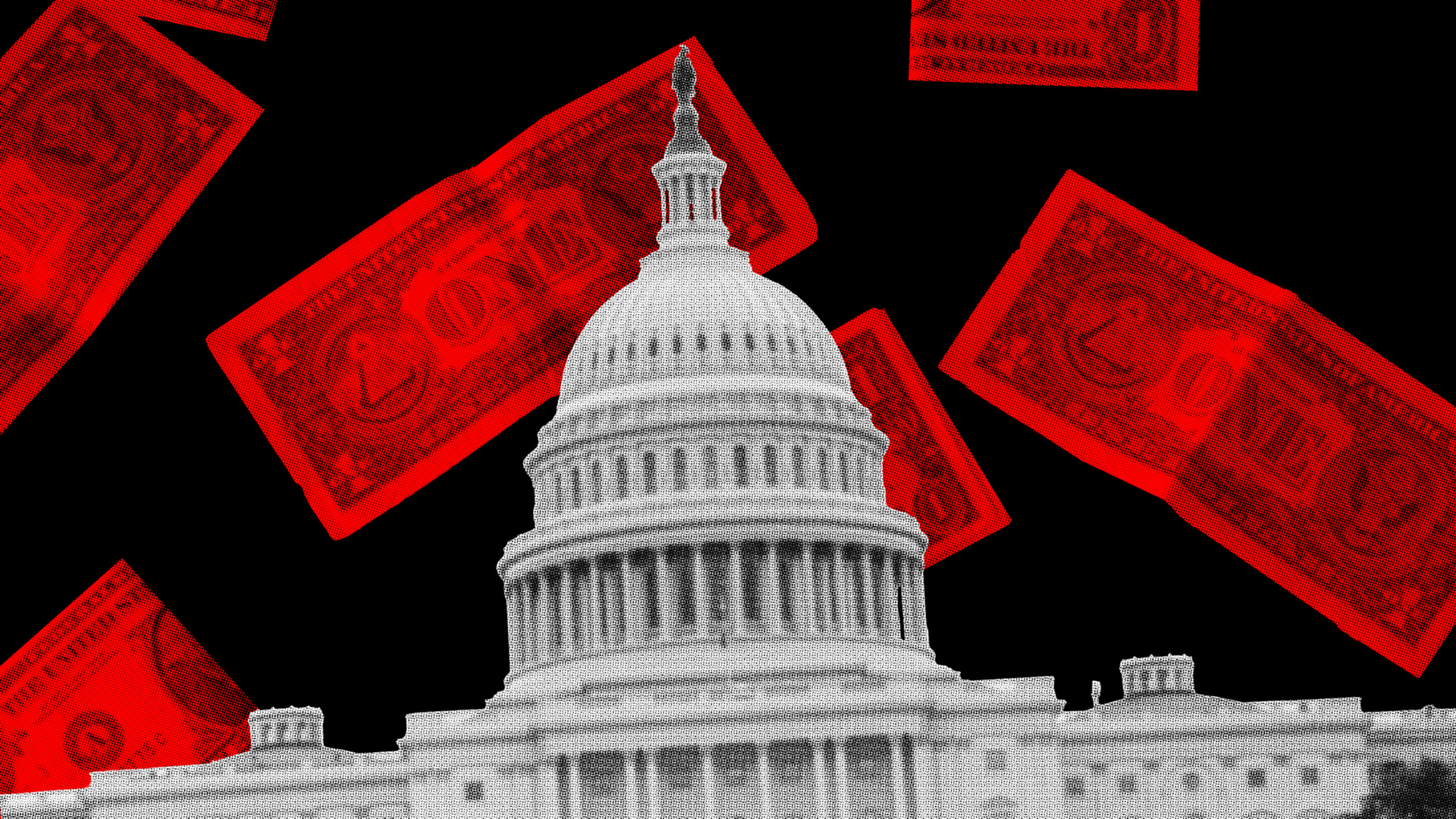With less than a month before the United States runs out of money, President Joe Biden and House Speaker Kevin McCarthy were finally scheduled to have a quick, carefree chat Tuesday afternoon about how to keep America from careening into a never-before-seen debt crisis that could drag the global economy down with it.
The Treasury Department has been warning for months that America’s figurative bank account will hit zero on June 1. If the debt limit isn’t increased before then, the federal government can default on tens of trillions of dollars, commencing what Moody’s chief economist once called “financial Armageddon.”
A default could trigger millions of layoffs and would put a (temporary) stop on tax refunds and Social Security, Medicare, and national debt interest payments. How the Treasury puts it: The United States would be “right back in a deep economic hole, just as the country is recovering from the recent recession.”
That’s what Biden, McCarthy, and three other leaders from both parties (House Democratic Leader Hakeem Jeffries, Senate Majority Leader Chuck Schumer, and Senate Minority Leader Mitch McConnell) hope to ward off as they sit down together for the first time since February. All of them agree that default shouldn’t happen, but the showdown is concerning how to head it off.
Where is the disagreement?
The Biden administration’s argument is that a responsible Congress would simply vote to raise the debt limit—a power it possesses, and a power it has exercised some 78 times when America has reached the limit under previous administrations, three of them while Trump was in office.
This time, though, Republicans say they will refuse unless Biden and the Democrats agree to reduce U.S. spending. The White House says Biden has agreed to entertain ways to lower the federal deficit but won’t help Congress hold spending hostage, as House members have already approved. In other words, they should fulfill their duly elected roles and increase the debt ceiling so there’s money.
Each year, Washington’s biggest spending fight revolves around the federal budget. But that budget keeps growing (it’s climbed 40% since 2019, according to the Congressional Budget Office), and that isn’t a trend line Republicans are fond of. They’re grabbing hold of the debt ceiling as a secondary pressure point to attempt to extract spending concessions from Democrats.
The White House is playing a game of chicken, insisting it won’t budge. Biden’s press secretary Karine Jean-Pierre told reporters on Monday that the White House feels members of Congress “must act” as part of “their constitutional duty,” and that is what Biden “is going to make very clear with the leaders tomorrow.” She did not talk up the president’s willingness to negotiate: “I wouldn’t call it ‘debt ceiling negotiations,’” she explained, describing the meeting as a “conversation” 15 different times during Monday’s briefing.
How do we get out of this?
Regardless of how Tuesday’s showdown goes, the question on most Americans’ minds is probably, “What pathways allow the country to emerge from this?” There are several. Two are obvious:
- One: Congress enacts what’s called a “clean debt increase,” allowing America to kick that can down the road, likely to the chagrin of a future administration.
- Or two: The White House and Democrats agree to cut spending in certain areas in exchange for Republicans voting to raise the debt ceiling. This could also include a tiny increase that would buy the two parties only a little extra time.
Then there are crazier pathways. One is the on-its-face preposterous idea of the Treasury minting a $1 trillion platinum coin. Due to a legal loophole, the Treasury may create a platinum coin in any denomination it wants. Over the years, the idea was floated as an end-around during the early-2010s’ fiscal-cliff debate; later, as a way to pay for the pandemic stimulus payments. But as a debt-ceiling fix, Treasury Secretary Janet Yellen has rejected the idea as “a gimmick” that “jeopardizes the independence of the Federal Reserve.” But it’s gained enough support for some to declare it “the least bad option,” and for #MintTheCoin to emerge on social media.
Another crazy pathway is for the Biden administration to use executive action to bypass the debt limit. This wouldn’t involve a coin worth a trillion dollars, but it would still be an action without historical precedent and could involve the government making some drastic move, such as declaring the debt limit unconstitutional. These options would almost certainly wind up in court, but recent reports have claimed that the White House is mulling them, anyway.
Why this feels so familiar
Debt-ceiling negotiations in the past have been dragged out to the 11th hour, sometimes literally hours before a default. The White House press secretary made clear in her statements that neither side is necessarily expecting to reach a deal Tuesday. We’ll just have to stay tuned to see what happens next.
Recognize your brand’s excellence by applying to this year’s Brands That Matter Awards before the early-rate deadline, May 3.
